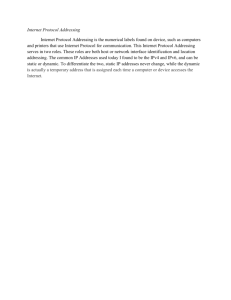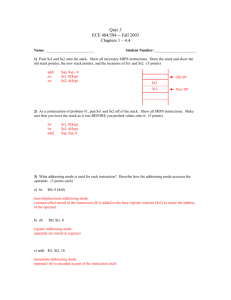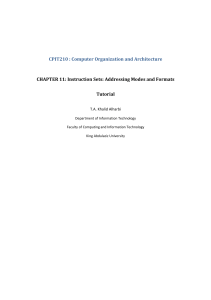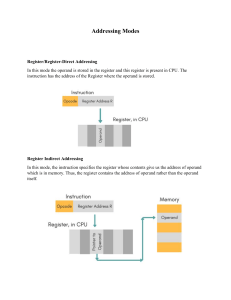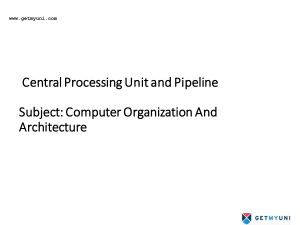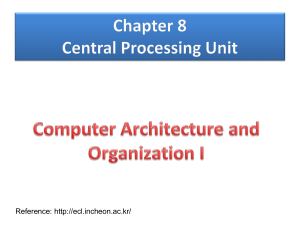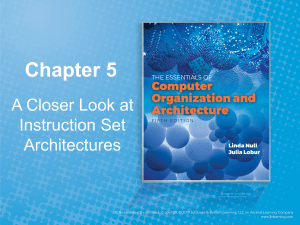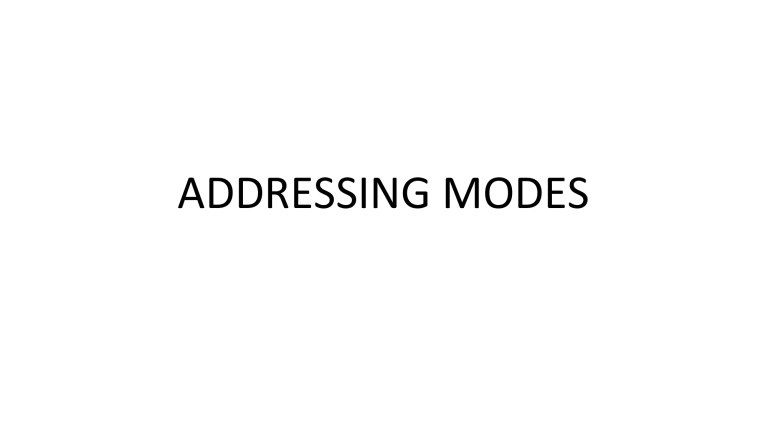
ADDRESSING MODES The addressing mode specifies a rule for interpreting or modifying the address field of the instruction before the operand is actually executed. An assembly language program instruction consists of two parts • IMPORTANT TERMS • Starting address of memory segment. • Effective address or Offset: An offset is determined by adding any combination of three address elements: displacement, base and index. • Displacement: It is an 8 bit or 16 bit immediate value given in the instruction. • Base: Contents of base register, BX or BP. • Index: Content of index register SI or DI. 8086 ADDRESSING MODES • Stack Addressing Mode • In this mode, operand is at the top of the stack. For example: ADD, this instruction will POP top two items from the stack, add them, and will then PUSH the result to the top of the stack. • Auto Increment Addressing Mode • In auto-increment addressing mode once the content of the register is accessed by the instruction the register’s content is incremented to refer the next operand. • Symbolically it is represented as below: • (R)+ • Here, the effective address is content of the register as it is enclosed by parenthesis. The content of register which is referring to a memory location is incremented so that it could point the next memory location where the next operand is stored. • Auto Decrement Addressing Mode • It is just opposite of auto-increment mode. In auto decrement mode the content of the register is decremented initially and then the decremented content of the register is used as effective address. • Symbolically it is presented as: • -(R) • The auto-increment and decrement mode help to implement the stack structure. problems • The most appropriate matching for the following pairs is-

